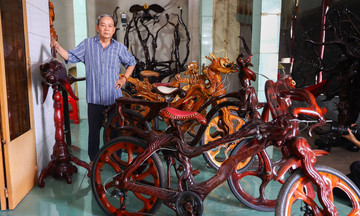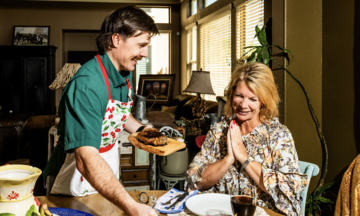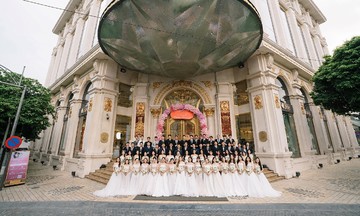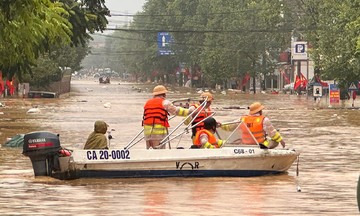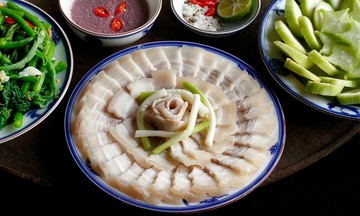Traditional culinary wisdom advises against stirring sugar during caramelization, suggesting that it ruins the color. Instead, it recommends cooking sugar over medium heat, patiently observing, and gently tilting the pan or swirling the pot for even melting.
Granulated sugar, or sucrose, is a disaccharide composed of glucose and fructose, known for its tendency to crystallize. When heated to around 160-170°C, sucrose begins to decompose, entering the caramelization stage, and forming a series of new compounds that give caramel its characteristic brown color and aroma.
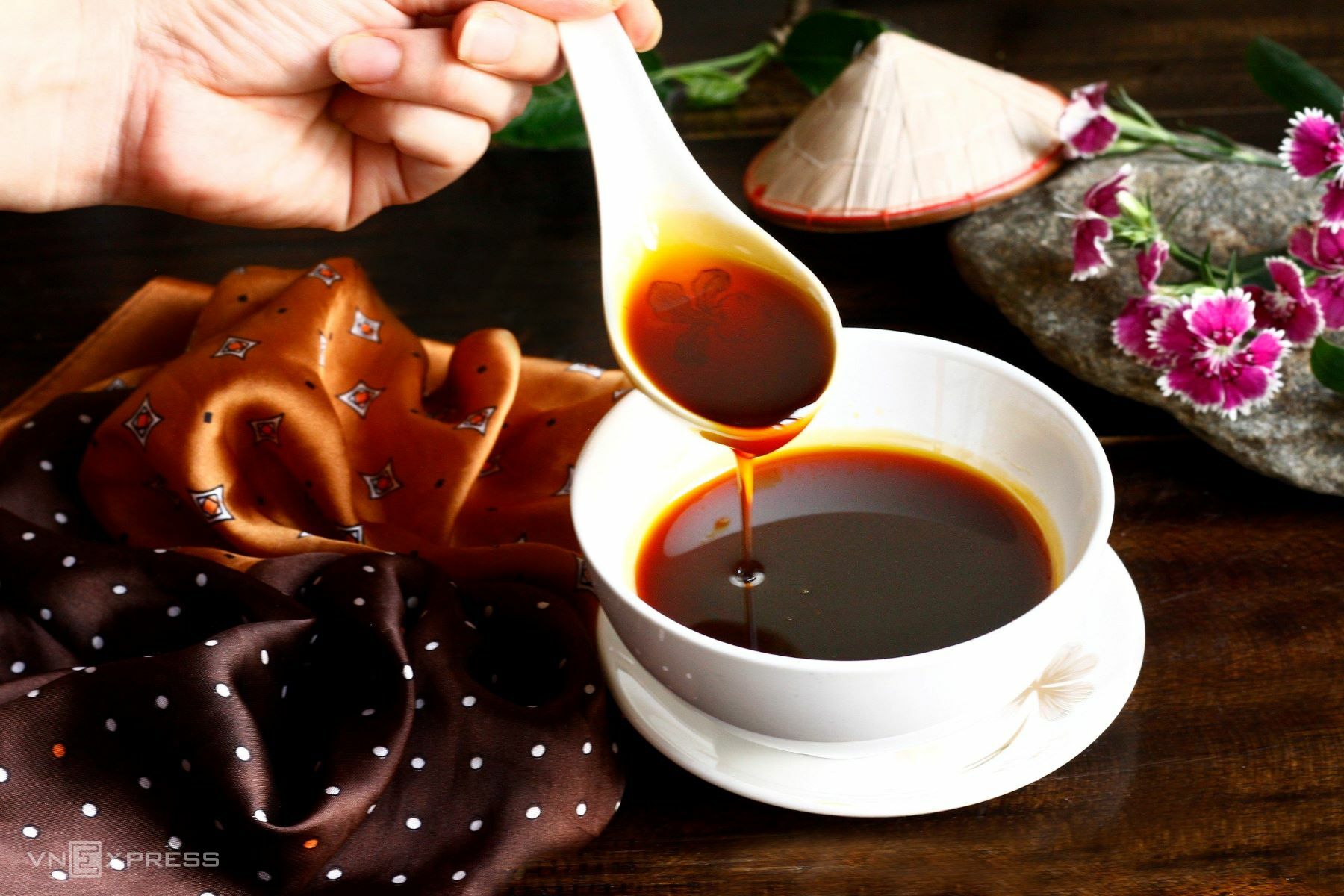 |
Properly made caramel has a smooth, light consistency and doesn't clump. Photo: Bui Thuy |
Properly made caramel has a smooth, light consistency and doesn't clump. Photo: Bui Thuy
Problems arise when undissolved sugar remains in the pot. Stirring with a utensil can cause this sugar to stick to it and the sides of the pot, leading to recrystallization. Other sugar molecules then readily attach, causing the entire mixture to clump and lose its smooth texture. However, gently tilting or swirling the pot allows the sugar molecules to melt and transform evenly in the heat, resulting in a clearer, more attractive, and stable caramel.
The caramelization stage is also delicate. Continuous stirring can cause uneven heat distribution, leading to scorching in some areas and a bitter taste. This is the primary reason why stirring is considered risky in the final stages.
There's a way to overcome this: start by caramelizing sugar with water and a bit of lemon juice. The citric acid in lemon catalyzes the hydrolysis of sucrose into glucose and fructose. These monosaccharides have different structures, making them less prone to simultaneous crystallization, resulting in a smoother, slower-to-harden caramel.
The folk wisdom of adding a bit of lemon juice near the end to prevent recrystallization is, in essence, a natural chemical technique.
When is it safe to stir?
Stirring sugar during caramelization isn't always detrimental. Some recipes call for adding water from the beginning to make caramel sauce. When sugar fully dissolves in the water, the molecules disperse evenly, reducing the risk of recrystallization. In this case, gentle stirring doesn't ruin the caramel but helps it dissolve faster and develop a uniform color.
This explains regional variations in caramelization methods. Central Vietnam favors adding sugar and water simultaneously, stirring as it cooks. Northern Vietnam typically dry-caramelizes sugar until melted before adding water, hence the advice against stirring. In Southern Vietnam, many use pre-made caramel, minimizing clumping issues.
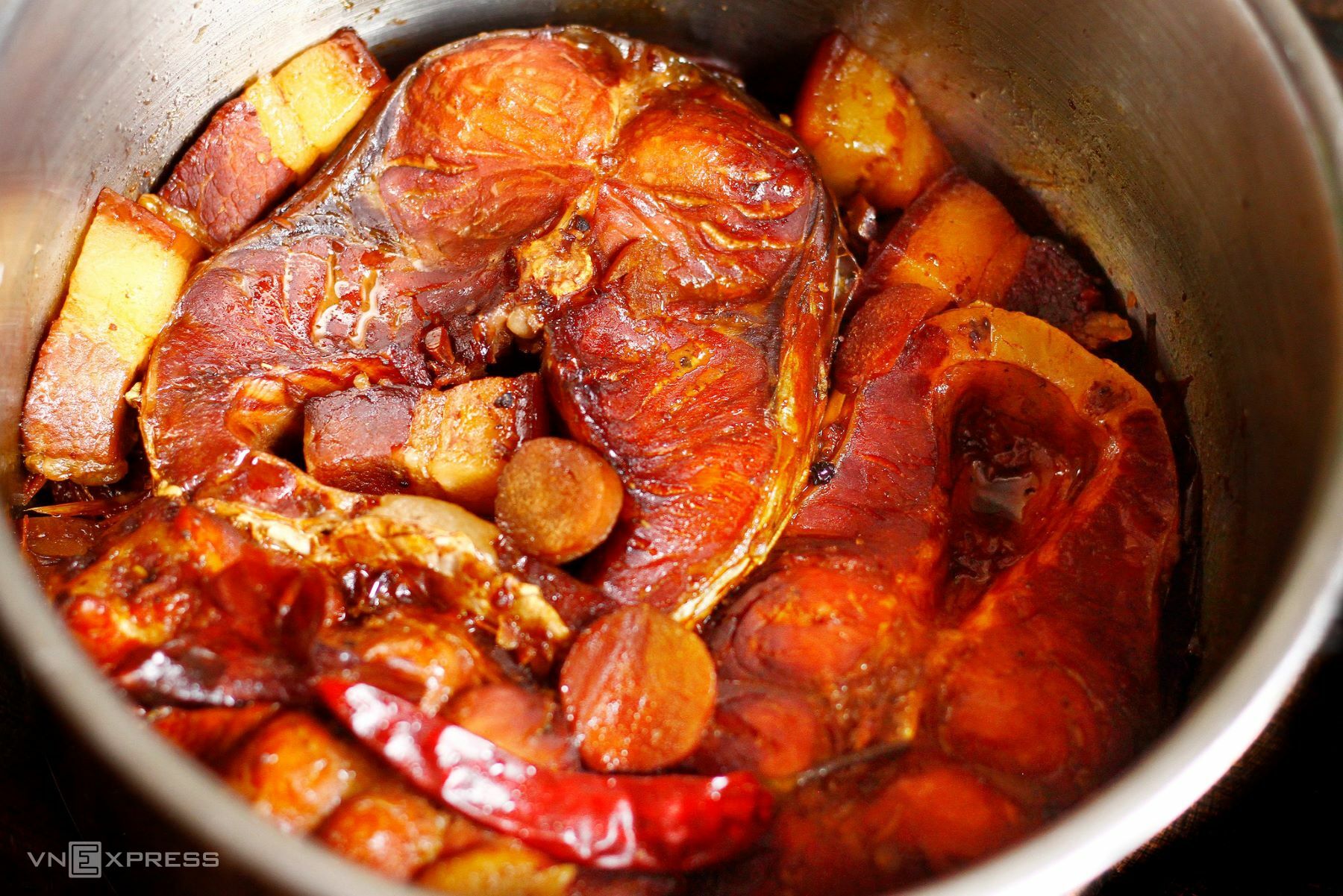 |
Braised fish gets its rich color and flavor from properly caramelized sugar. Photo: Bui Thuy |
Braised fish gets its rich color and flavor from properly caramelized sugar. Photo: Bui Thuy
With modern non-stick cookware and temperature-controlled stoves, stirring poses less risk than cooking over traditional wood or charcoal fires. Some chefs still stir while caramelizing, carefully controlling the temperature between 170-180°C to avoid burning. This allows the caramel to develop a quick, attractive color without bitterness.
Ultimately, successful caramelization isn't about whether or not to stir, but about understanding the process. Knowing the mechanics of caramelization and the impact of different actions allows for flexibility. The same action can yield drastically different results depending on the context.
Bui Thuy




